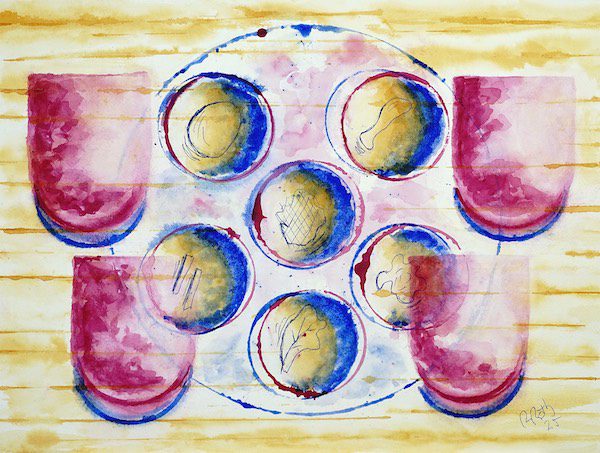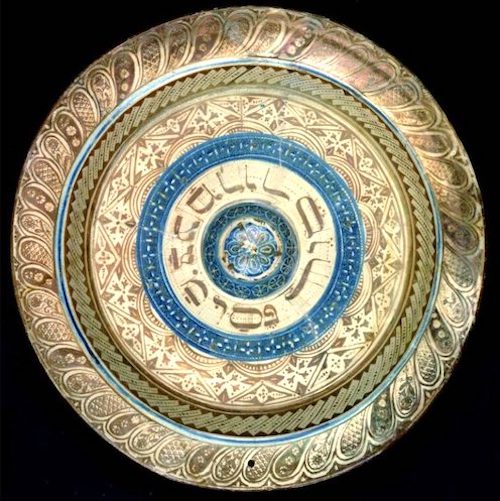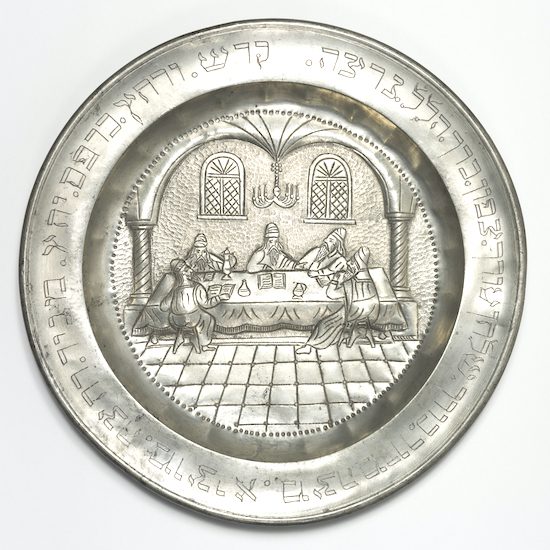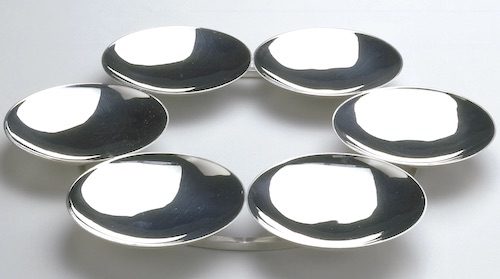The Passover seder plate is a central symbol of the Jewish holiday of Passover. It holds deep historical and cultural significance. Each item on the plate represents a key element of the Exodus. But where did the idea of using a seder plate for Passover come from? In this blog post, we explore the origin of the seder plate. We also look at the evolution of seder plate designs from past to present.

Passover Without the Seder Plate: the Temple Period
Passover wasn’t always celebrated with a Seder plate. In biblical times, the Temple in Jerusalem was central to the Passover observance. Here, people brought the ‘korban Pesach’, a sacrificial lamb, roasted and eaten by families at the Temple according to the rules set out in the Torah. The lamb was accompanied by matzah and bitter herbs. This was the core of the Passover observance.
The Origin of the Seder Plate: the Rabbinic Period
After the destruction of the Second Temple in 70 CE, sacrifices were no longer possible. Passover needed a new form to replace the ritual of the korban Pesach. The seder plate and accompanying ritual was also a response to the practices of various sects antagonistic to Judaism. The matzah and bitter herbs remained, with new symbolic foods added: egg, shankbone, and charoset. These foods helped keep the Passover story alive, fulfilling the mitzvah of remembering the Exodus.
The first seder plate appears in a reference in the Mishnah. However, there’s no mention of the design of the plate or the arrangement of foods on the plate.
The Seder Plate: Designs from Past to Present
From the 16th century and onward, artisans began making elaborately decorated seder plates depicting scenes from the Exodus, or Passover guests sitting at the holiday table. Made from ceramic, silver, or metal, these seder plates had intricate designs and Hebrew inscriptions. In addition to Biblical scenes, seder plates included floral and geometric patterns. These artistic designs were a testament to the craftsmanship and artistry of their time, with seder plates passed down through generations as family heirlooms.
Seder Plate Designs: Before 1800


Seder Plate Designs: 19th Century
Seder Plate Designs: 20th Century
Modern Seder Plate Designs


Minimalist silver seder plate, Lella Vignelli, Italy, 2007

More Judaica in Art – the Origin of the Havdalah Spice Tower
Discover more from Rhonda Roth Art
Subscribe to get the latest posts sent to your email.



